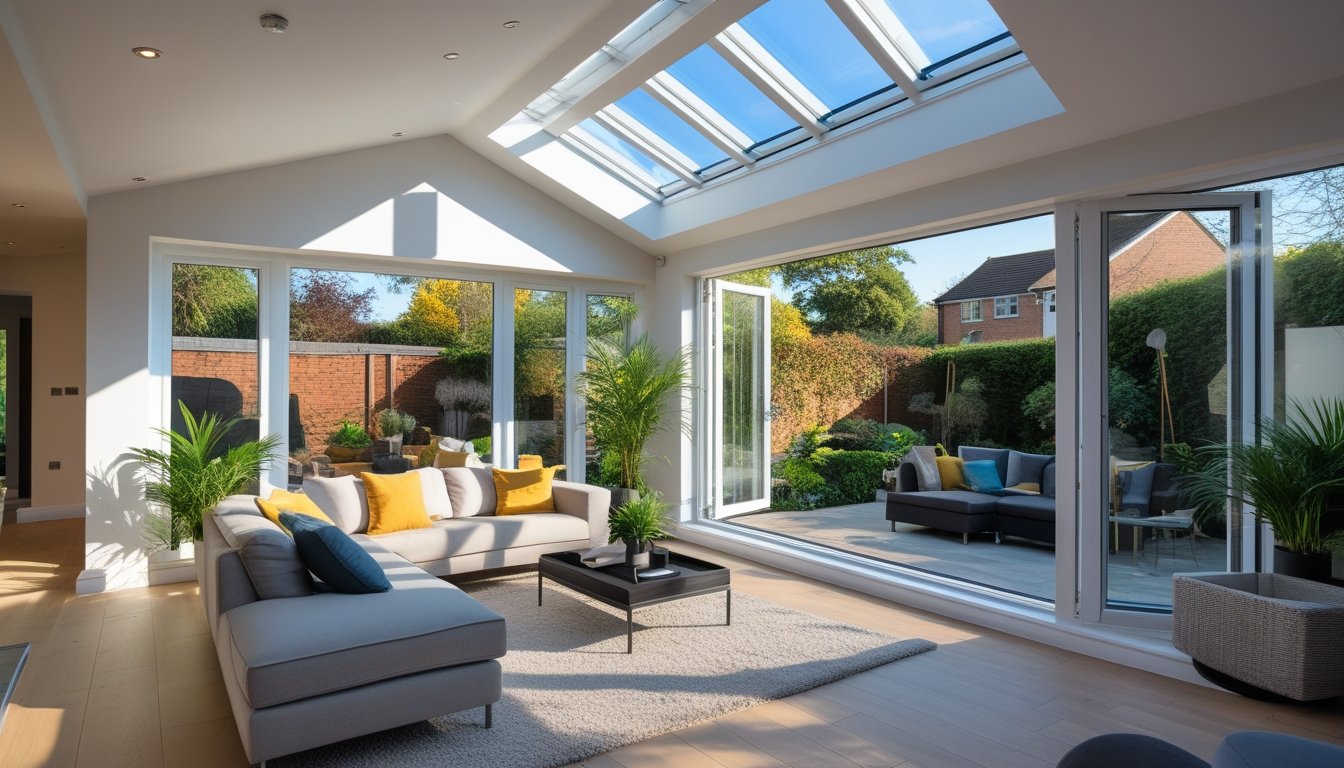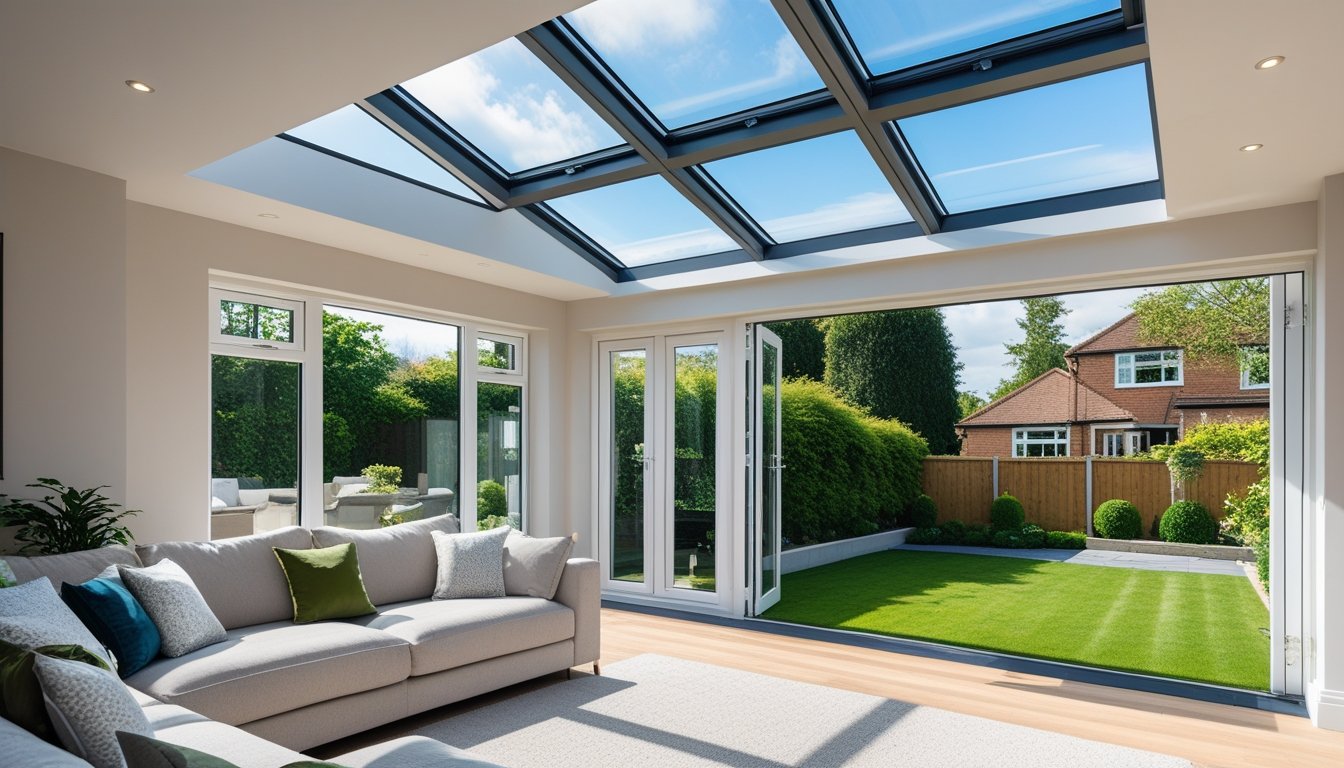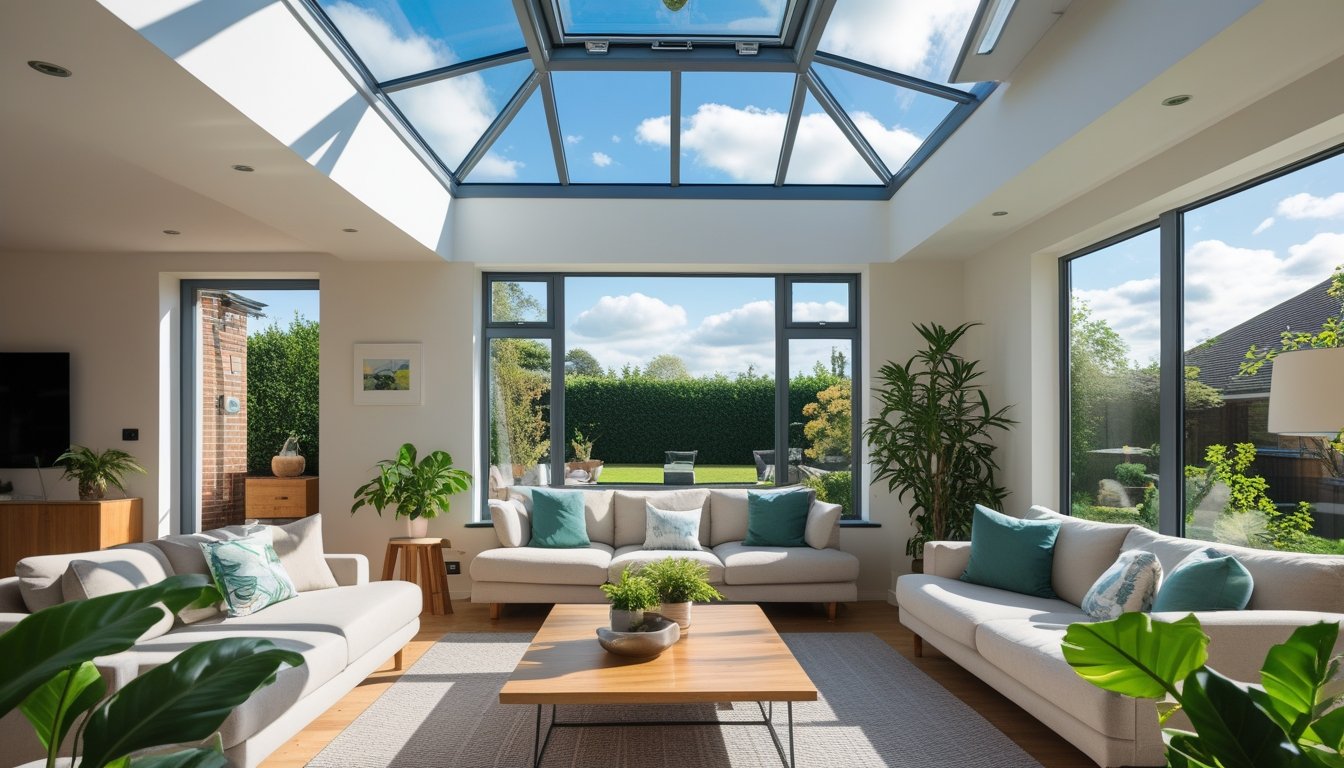Late updated: 21 Sep 2025 13:09
Written by: Oliver Bennett
The Benefits Of Installing Roof Lanterns In UK Homes: Enhanced Natural Light and Aesthetics
In the world of home design, enhancing natural light is a popular trend, and one of the most effective ways to achieve this in UK homes is by installing roof lanterns. Roof lanterns are an excellent addition as they significantly increase the amount of natural light, transforming spaces into brighter, more inviting environments. By choosing this architectural feature, homeowners can create a striking visual impact and maximise the aesthetic potential of their living spaces.

Beyond aesthetics, the practical benefits of roof lanterns should not be understated. With the ability to reduce dependency on artificial lighting, they contribute to energy efficiency, leading to potential savings on utility bills. Moreover, many modern roof lanterns are designed with energy-efficient materials, ensuring comfortable indoor temperatures throughout the changing UK seasons.
Let's explore how these stunning features can elevate our homes and improve both functionality and design in a seamless blend.
Key Takeaways
- Roof lanterns enhance natural lighting and aesthetic appeal.
- They contribute to energy efficiency and potential cost savings.
- Modern designs offer customisation to suit diverse UK home styles.
Key Benefits of Installing Roof Lanterns in UK Homes
Installing roof lanterns brings a multitude of advantages to UK homes, transforming living spaces with enhanced natural light, improved energy efficiency, and increased aesthetic appeal. Let's explore these benefits in detail.
Maximising Natural Light and Daylight
Roof lanterns are exceptional at maximising natural light and daylight within our homes. By allowing abundant daylight to penetrate indoor spaces, they eliminate the need for artificial lighting during daytime hours. This influx of natural light can brighten even the darkest corners, creating a brighter and more inviting atmosphere in kitchens, dining rooms, and living areas.
The increased exposure to natural light enhances our mood and well-being, making interiors feel more connected with the outdoors. The psychological benefits of natural light, including improved mental clarity and reduced stress levels, further underline the value of roof lanterns as a home improvement choice.
Enhanced Energy Efficiency and Thermal Insulation
We often associate roof lanterns with energy efficiency, particularly modern designs featuring thermal breaks and high-performance glazing. These features help to regulate indoor temperatures, keeping our homes warm in winter and cool in summer. This reduces reliance on heating and cooling systems, potentially leading to lower energy bills.
The thermal insulation properties of roof lanterns contribute to maintaining comfortable living conditions. The energy-efficient glazing minimises heat loss, ensuring optimal performance regardless of climate or season. This forward-thinking approach not only benefits us financially but also supports sustainability by reducing energy consumption in daily living.
Improved Living Spaces and Open-Plan Living
Roof lanterns play a significant role in enhancing living spaces, facilitating open-plan living and creating a greater sense of space. By bringing in more light, they make our living areas feel larger and more expansive. This is particularly advantageous for open-plan layouts, where natural light can flow seamlessly across interconnected spaces.
In kitchens and dining rooms, the presence of a roof lantern can rejuvenate the atmosphere, transforming the areas into welcoming hubs for family gatherings and entertaining guests. The added illumination can highlight architectural features, accentuating the design and decoration of our homes with grace and elegance.
Aesthetic Appeal and Architectural Beauty
Roof lanterns significantly boost the aesthetic appeal and architectural beauty of our homes. They serve as standout features that add character and charm, enhancing curb appeal and increasing property value. The architectural interest they provide can elevate the overall design, creating striking visuals both inside and out.
Their ability to blend with various architectural styles makes them versatile additions to any home. Regardless of the existing design, a roof lantern can integrate harmoniously, enhancing aesthetic value without clashing with the surroundings. Through this seamless integration, roof lanterns offer timeless elegance and sophistication, elevating our homes to new heights of style and grandeur.
Technical Features, Installation Considerations, and Customisation

Roof lanterns are a vibrant addition to any UK home, enhancing both the aesthetics and the comfort. In this section, we focus on advanced glazing technology, installation and planning requirements, and materials that offer flexibility and style.
Advanced Glazing Technology for Comfort and Savings
High-performance glazing technologies are pivotal. Triple glazing options are becoming increasingly popular due to their excellent thermal performance. By reducing energy consumption, these features contribute to lower energy bills and a reduced carbon footprint.
Self-cleaning glass and solar control glass technologies further enhance energy savings. Low-e coatings improve energy efficiency by reflecting heat back into the home, while ensuring ample natural light. These technologies create a balance between comfort and savings, maximising natural light, while minimising energy costs.
Professional Installation, Planning Permission, and Durability
A professional installation is critical to ensure the durability and effectiveness of roof lanterns. It often requires specific planning permission, especially in conservation areas or listed buildings. Roof lantern installation on a flat roof demands precision for proper airflow and ventilation.
Ensuring the structural integrity of the building is vital. The Korniche roof lanterns are an example of designs that combine lightness with durability. With the structure’s ability to withstand the UK’s variable climate, the results are both aesthetically pleasing and long-lasting.
Frame Materials, Aluminium Options, and Design Flexibility
Frame materials play a key role in the design and efficiency of roof lanterns. Aluminium frames, for example, are popular for their strength and lightweight properties. They allow for larger glass panels, maximising light inflow.
Additionally, customisable sizes and styles mean homeowners can tailor the structure to their specific needs. The flexibility in design ensures that both traditional and modern styles can be accommodated. Diverse colour options and finishes provide further customisation, creating a unique feature that fits seamlessly into any home’s design.
Frequently Asked Questions

We often get inquiries regarding roof lanterns and their impact on homes. Here, we address common questions related to energy efficiency, natural light enhancement, design differences, installation viability, costs, and maintenance.
What are the energy efficiency advantages of having a roof lantern in a UK home?
Roof lanterns can significantly improve a home's energy efficiency. They provide better insulation and reduce the need for artificial lighting, especially during daylight hours. Many modern roof lanterns are designed with energy-efficient glazing options to help maintain indoor temperatures, contributing to overall energy savings.
How does a roof lantern impact the natural light within British homes?
Roof lanterns are exceptional for enhancing natural light. They can transform a dimly lit room into a bright, welcoming space. By maximising daylight, these structures reduce the reliance on artificial lighting and create a more open ambiance in our homes.
What is the difference between a roof lantern and a skylight in terms of architectural design?
Roof lanterns and skylights differ mainly in design. Roof lanterns are three-dimensional structures with a pitched or domed shape, resembling a miniature greenhouse. In contrast, skylights are typically flat and integrate seamlessly with the roofline. The architectural choice between the two often depends on aesthetic preferences and structural considerations.
Can a roof lantern be installed on any type of roof within the UK housing regulations?
Roof lanterns can be installed on various roof types, but specific considerations must be made regarding the structure and regulations. It’s crucial to adhere to UK building codes, which may require planning permission. Consulting with professionals ensures compliance and safe installation.
What are the potential costs associated with the installation of a roof lantern?
The cost of installing a roof lantern can vary widely. Factors such as size, design, glazing type, and installation complexity all play a role. Standard options might start around a few hundred pounds, while custom designs can be significantly more expensive, potentially reaching several thousand pounds.
What maintenance considerations should homeowners be aware of for roof lanterns?
Regular maintenance of roof lanterns involves cleaning the glass to ensure maximum light penetration and checking seals for leaks. We recommend scheduling periodic inspections, particularly after severe weather, to ensure sustained performance and longevity. Careful upkeep helps maintain both their aesthetic appeal and functional integrity.
